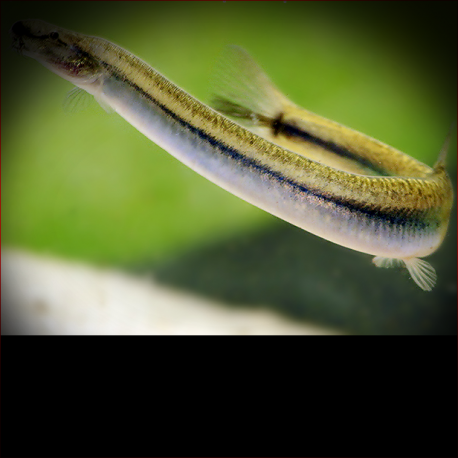More info
Datasheet
| Minimum Tank Size | 60 litres / 15.85 US gallons |
| Maximum Size | 12.0cm / 4.72inches |
| Temperature | 22°C / 71.60°F - 29°C / 84.20°F |
| Hardness | 0.00dgH / 0ppm - 8.01dgH / 143ppm |
| pH | 6.0-7.5 |
General Description
One of the Pangio species, specifically Pangio Anguillaris, commonly known as "eel loach," is elongated with an approximately 12.0cm body length, lacking nasal barbels and cheek scales. It is classified under the family Cobitidae within the Cypriniformes order. The species is found in particular regions of South and Southeast Asia, with a preference for slow-moving, shallow waters rich in vegetation.
Aquarium Setup
For keeping Pangio Anguillaris in captivity, a minimum tank size of 60 litres is recommended. The aquarium should have a soft, sandy substrate, driftwood roots, and branches to create shaded areas. Dried leaf litter mimicking natural conditions and aquatic plants like Microsorum and Cryptocoryne spp. can be added. Gentle filtration with minimal surface agitation is suitable, and water conditions should ideally be within a pH range of 6.0-7.5, hardness of 0-143ppm, and a temperature of 22-29°C.
Behaviour
Pangio Anguillaris are peaceful both with their species and other tankmates, typically residing in groups and seeking shelter in nooks or caves. They are micropredators known to feed on insect larvae, small crustaceans, and organic detritus. Suitable tankmates include peaceful species from similar habitats, with caution advised when pairing with territorial or aggressive fish.
Feeding and Diet
Their diet consists of live and frozen foods like Daphnia, Artemia, bloodworm, and micro worm, in addition to sinking dried foods. Pangio Anguillaris have a feeding behavior of sifting mouthfuls of substrate to extract food, a reflection of their natural feeding habits.
Reproduction & Dimorphism
Information on captive breeding of Pangio Anguillaris is lacking. In the wild, spawning occurs in shallow, vegetated waters. Sexual dimorphism includes heavier-bodied adult females and males with branched pectoral fins and the development of a nuchal hump in some mature males.
Habitat and Distribution
Primarily found in regions such as the Kapuas river basin in Indonesia, Pangio Anguillaris inhabits slow-moving streams, swamps, and backwaters with soft mud or sandy substrates. The species has a patchy distribution across Southeast Asia, suggesting the presence of closely related taxa beyond the currently recognized range.

